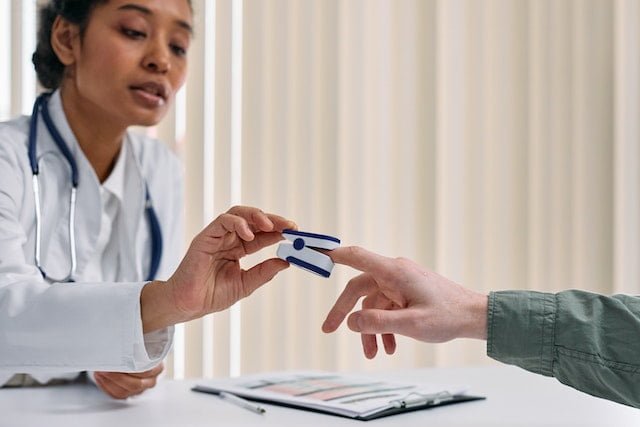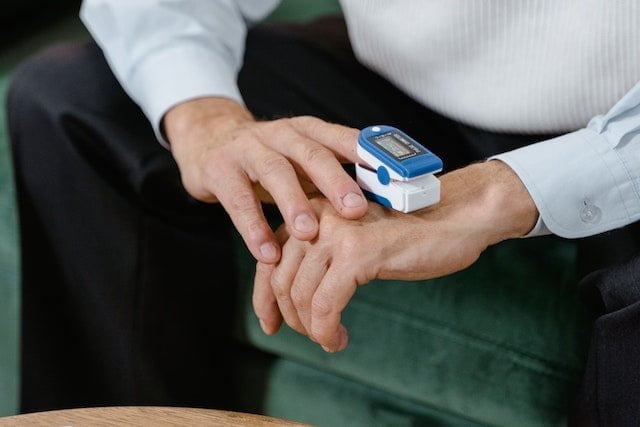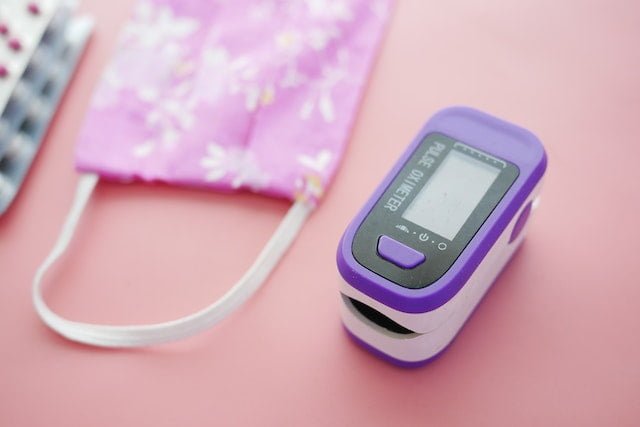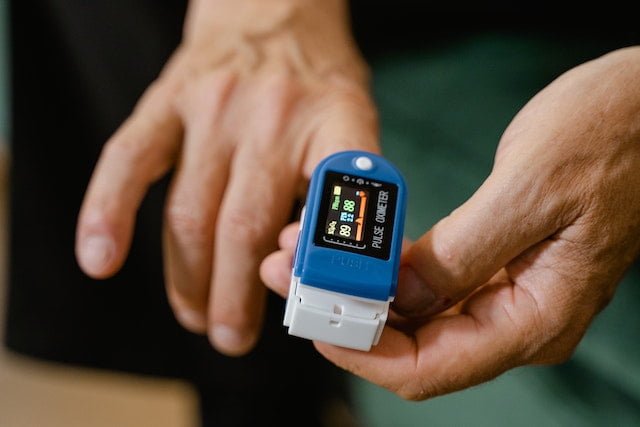One of the basic parameters calculated in a patient is oxygen saturation which is a quantitative estimation of oxygen-bound hemoglobin molecules called oxyhemoglobin in the arterial blood. A normal value of this oxygen saturation ranges between 965 to 100%. However, the situation might become crucial if this number falls below 92%, a state often associated with visual changes, unconsciousness, as well as damage to vital organs including the brain and liver. Therefore, patients affected by disease conditions that reduce oxygen saturation should be monitored continuously. For this purpose, an oximeter is employed which displays a patient’s oxygen saturation in a continuous manner. Let us dive more deeply into this product and its utilization.

Effects of Reduced Oxygen Levels
Considering the severe effects of hypoxemia i.e. extremely low oxygen levels, the continuous measurement of oxygen saturation has been termed as ‘an essential element of patient care’ by the National Institute of Health. A study1 published in COVID, an MDPI journal in 2021 has highlighted the importance of an early detection of hypoxemia in COVID-19 patients. It has been stated that in asymptomatic patients, silent hypoxemia, also known as happy hypoxemia, can lead to severe respiratory consequences.
Furthermore, the authors have also mentioned how late detection of hypoxemia can result in morbidity. Therefore, it can be concluded that an early detection of hypoxemia can indeed be life-saving in most cases. In hypoxemia, a patient may go through milder to severe symptoms which include:
• Headache
• Difficulty in breathing
• Rapid heart rate
• Confusion
• Restlessness
• Bluish skin, nails, and lips
• Coughing
• Wheezing
Conventional Methods of Monitoring Blood Oxygen Levels
Conventionally, oxygen concentration in the blood can be estimated by taking a blood sample from an artery in the wrist or earlobe using a needle. This sample is then checked in the lab by running certain tests which gives away the levels of oxygen, carbon dioxide, as well as the pH of your blood.
This test is referred to as arterial blood gas (ABG) test. As the method is invasive, its patient compliance is less. Moreover, issues like the presence of air bubbles in the sample, inadequate concentration of added coagulant, and delay in analyzing the uncooled samples have rendered the method inconvenient.

Advantages of Using Oximeters
An oximeter works by passing a light beam through the skin to evaluate the level of oxygen in the blood which is then displayed on your mobile screen. It provides the following advantages:
• An oximeter measures oxygen levels directly from the patient’s blood rather than from a collected blood sample thus increasing patient compliance.
• Oximeters are non-invasive devices and do not cause any pain to the patients while monitoring their oxygen saturation.
• The results are obtained quickly thus aiding in immediate medical intervention when necessary.
• Being portable, it is easy to use oximeters in diverse settings i.e. from hospitals to home care.
• Oximeters are suitable for patients of varied age groups ranging from neonates to adults.
Specifications and Standout Features of the Oximeters
Multiple brands are known to manufacture oximeters with similar features and specifications. Here is a comparative analysis of some of the commonly available oximeters in the US market in 2023:
• Santamedical Dual Color Pulse Oximeter
The santamedical dual-color pulse oximeter is a clinically tested device that provides reliable results with accuracy. Parameters like pulse rate, pulse strength, as well as oxygen strength can be measured and displayed easily using the Santamedical dual pulse oximeter.
Moreover, it has 2 AAA batteries which have a life of 30 hours. It is lightweight, portable, and easy to use. With a 1-year warranty, the device is consumer-friendly. With the rapid result display, the device can be used in pediatrics as well as the elderly.
• Clinical Guard Pulse Oximeter
Clinical Guard CMS-50DL pulse oximeter measures the oxygen saturation when attached to the patient’s fingertip. It can also measure and display heart rate as it has a heart rate tracker. Covered with a silicon case, the device does not get damaged easily.
Additionally, it has 2X AAA batteries which have a life of 12 months. The device shuts off its display automatically when not in use after a period of 5 seconds. Moreover, it takes very little time to indicate readings i.e. 8 seconds. It is suitable for both pediatric and adult patients.
• Concord Emerald Fingertip Pulse Oximeter
Concord emerald fingertip pulse oximeter is an accurate, quick, and easy-to-use device. The instrument can display blood oxygen saturation, pulse strength, and pulse rate.
The device is also equipped with a reversible/rotatable display, and 2X AAA batteries, and has a stand-out feature of saving battery life by getting auto-powered-off after 8 seconds.
Moreover, when the battery is low, an indicator lets the user know before the device stops working. Along with all of these features, the device also comes with a 2-year warranty. The device can be used on individuals of all age groups.

All types of oximeters mentioned in this article, along with multiple other medical supplies, are available at Health Supply 770 at the most affordable prices. Furthermore, the prices are even lower during the weekly deals they offer on certain items. Do check out the link at the end of the article for making a purchase.
Conclusion
Varying concentrations of oxygen levels in the blood can pose serious risks to a patient’s health. This has led to the development of various methods which can be employed to monitor oxygen saturation. The conventionally used methods are, however, invasive and less patient-compliant.
Fortunately, medical devices like oximeters have helped to perform oxygen measurements with ease. Being non-invasive, the process has high suitability and provides routine health checks to critical care situations.
Moreover, owing to their ease of utilization as well as accuracy, oximeters bring value by assisting medical decision-making. Reliable suppliers like Health Supply 770 should be approached for buying top-quality medical products as their reliability speaks for itself.
Explore our range of oximeters
Further reading
- https://www.mdpi.com/2673-8112/2/1/4#metrics

PhD Scholar (Pharmaceutics), MPhil (Pharmaceutics), Pharm D, B. Sc.
Uzma Zafar is a dedicated and highly motivated pharmaceutical professional currently pursuing her PhD in Pharmaceutics at the Punjab University College of Pharmacy, University of the Punjab. With a comprehensive academic and research background, Uzma has consistently excelled in her studies, securing first division throughout her educational journey.
Uzma’s passion for the pharmaceutical field is evident from her active engagement during her Doctor of Pharmacy (Pharm.D) program, where she not only mastered industrial techniques and clinical case studies but also delved into marketing strategies and management skills.
Throughout her career, Uzma has actively contributed to the pharmaceutical sciences, with specific research on suspension formulation and Hepatitis C risk factors and side effects. Additionally, Uzma has lent her expertise to review and fact-check articles for the Health Supply 770 blog, ensuring the accuracy and reliability of the information presented.
As she continues her PhD, expected to complete in 2025, Uzma is eager to contribute further to the field by combining her deep knowledge of pharmaceutics with real-world applications to meet global professional standards and challenges.








